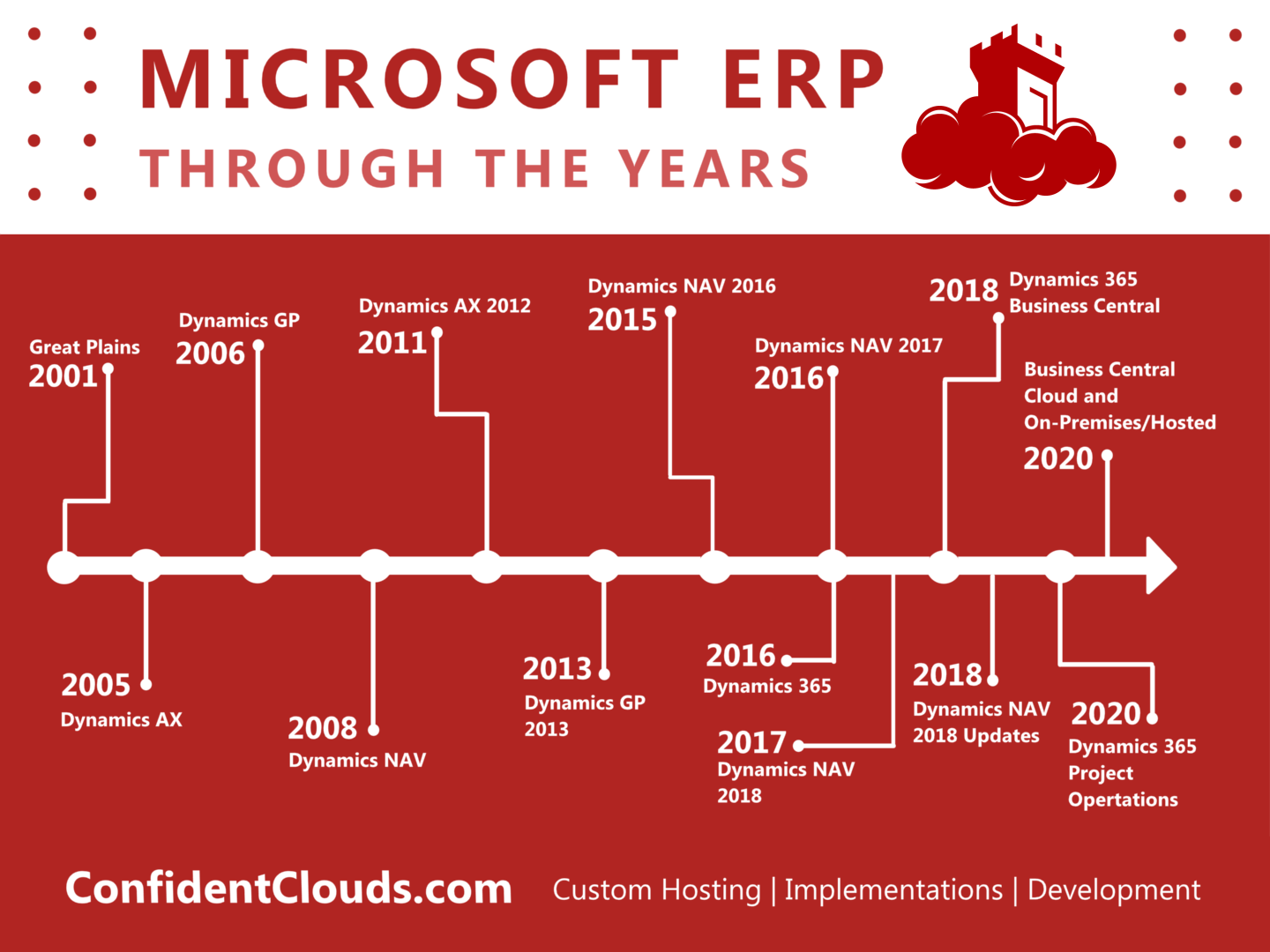Evolution of Microsoft Dynamics ERP Solutions – Part 1
Microsoft Dynamics ERP solutions have evolved significantly over time in terms of their features, functionality and how they are delivered to customers. Microsoft increasingly adopted a customer-centric approach to developing its ERP solutions. The company actively seeks customer feedback and used this feedback to improve its products and services. This approach has led to creating of industry-specific solutions tailored to the unique needs and challenges of different industries, such as manufacturing, retail, healthcare, and financial services. These industry-specific solutions can help businesses streamline their operations, reduce costs, and improve customer satisfaction. Here’s a brief overview of the evolution of Microsoft Dynamics ERP solutions:
1. Microsoft Dynamics AX: Originally known as Axapta, Dynamics AX was first released in 1998 by a Danish software company called Damgaard Data. In 2002, Microsoft acquired Damgaard Data and rebranded Axapta as Dynamics AX. Dynamics AX was designed to be a scalable, modular ERP solution for mid-sized and large businesses, offering a range of modules for financial management, supply chain management, manufacturing, and other core business functions.
2. Microsoft Dynamics GP: Originally known as Great Plains, Dynamics GP was first released in 1993 by a company called Great Plains Software. In 2001, Microsoft acquired Great Plains Software and rebranded Great Plains as Dynamics GP. Dynamics GP was designed to be a flexible, easy-to-use accounting and financial management solution for small and mid-sized businesses.
3. Microsoft Dynamics NAV: Originally known as Navision, Dynamics NAV was first released in 1987 by a Danish company called PC&C A/S. In 2002, Microsoft acquired Navision and rebranded Navision as Dynamics NAV. Dynamics NAV was designed to be a flexible, scalable ERP solution for small and mid-sized businesses, offering a range of modules for financial management, supply chain management, manufacturing, and other core business functions.
4. Microsoft Dynamics SL: Originally known as Solomon, Dynamics SL was first released in 1984 by a company called Solomon Software. In 2000, Microsoft acquired Solomon Software and rebranded Solomon as Dynamics SL. Dynamics SL was designed to be a project-focused ERP solution for small and mid-sized businesses, offering modules for financial management, project management, and accounting.
5. Microsoft Dynamics 365: In 2016, Microsoft launched Dynamics 365, a cloud-based ERP and CRM solution that combined the functionality of Dynamics AX and Dynamics CRM into a single platform. Dynamics 365 was designed to be a modular, scalable, and flexible solution that could be customized to meet the unique needs of any business. Dynamics 365 also introduced a range of new features, including advanced analytics and machine learning capabilities, and a unified data model that allowed for seamless integration with other Microsoft products and third-party applications.
6. In 2018, Microsoft also released Dynamics 365 Business Central, which provides businesses with an all-in-one business management solution. The update included the introduction of new features such as inventory management, budgeting, and cash flow management.
7. In 2020, Microsoft released Dynamics 365 Supply Chain Management, which provides businesses with a comprehensive suite of tools for supply chain planning and execution. The update also included the introduction of new features such as warehouse management, inventory management, and digital supply chain capabilities. Additionally, Dynamics 365 Business Central was enhanced with new features such as customer service management and supply chain analytics.
Overall, the evolution of Microsoft Dynamics ERP solutions has been characterized by a commitment to delivering flexible, scalable, and integrated solutions that meet the unique needs of businesses of all sizes and industries. The move towards cloud-based solutions, the emphasis on user experience and mobile accessibility, and the focus on industry-specific solutions and integration with third-party solutions are just a few examples of how Microsoft continues innovating and evolving in the ERP market.
Another important aspect of the evolution of Microsoft Dynamics ERP solutions is the move toward artificial intelligence and machine learning. Dynamics 365 includes a range of AI-powered features that can help businesses automate repetitive tasks, make data-driven decisions, and gain insights into business operations. For example, Dynamics 365 can use machine learning algorithms to predict which customers are most likely to churn or to suggest the best products to cross-sell or up-sell to a given customer. These AI-powered features can help businesses become more efficient, effective, and competitive in the marketplace.


Comments are closed.